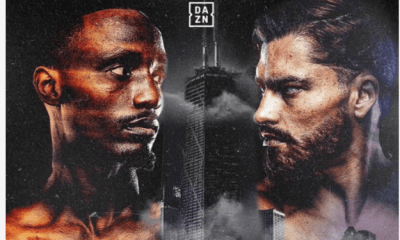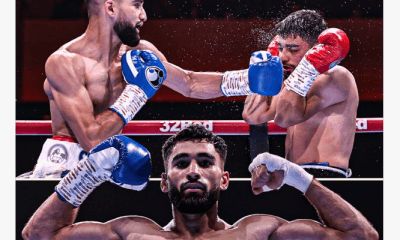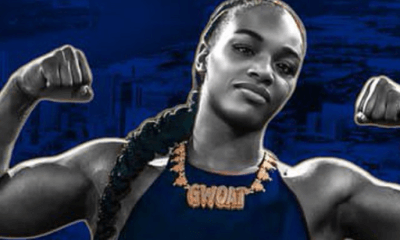Featured Articles
The Fifty Greatest Flyweights of All Time: Part One 50-41
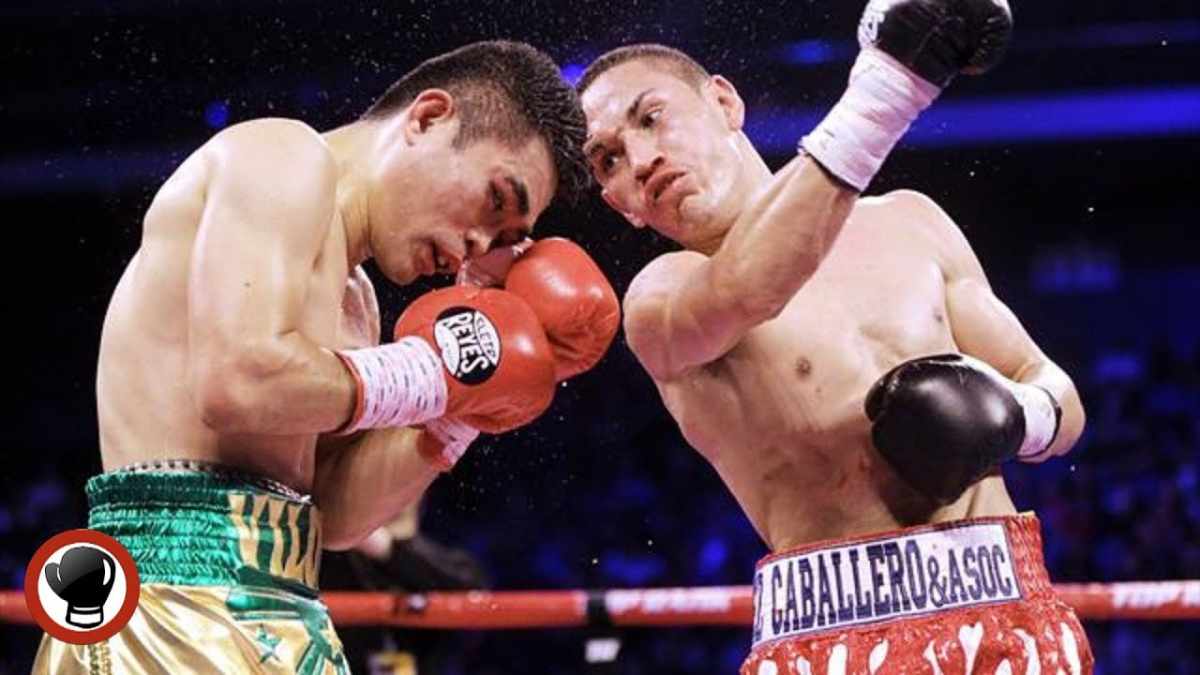
The Fifty Greatest Flyweights of All Time: Part One 50-41
Research on the greatest heavyweights of all time was easy. Fire up YouTube or Dailymotion, watch the career-defining fights of a given contender, compare and contrast, order and write-up, delivered.
By lightweight, things were considerably more difficult.
This is to do with a diminishing interest in boxers by size. It is literally the case that available information is reduced coextensively with the poundage of the fighters in question. By the time I was involved with the bantamweights, things had become extremely difficult, unwholesomely greedy of my time and actually rather expensive.
Needless to say, the flyweights have been even more demanding.
The temptation to cut corners was, at times, enormous, but I allowed myself only one of meaning: this list is cognitive only of flyweights who fought from the Jimmy Wilde title reign to the present day. While every one of these projects has had a cut-off, flyweight’s is the most recent, the World War I era. Partly, this is due to the absurd difficulty in researching 1900 contenders of this size but it is in the main due to uncertainty surrounding the poundage. Flyweight was paperweight for a long time and paperweight was never better than partially established globally. Tough on Johnny Coulon, but there it is.
Otherwise, the flyweight list has been put together under the same rules as governed the others. First and foremost, it should be stated the list considers only fights that took place at flyweight or just above. So a 108lb fighter boxing in 2017 is a light-fly but a 108lb fighter boxing in 1925 was a flyweight, because light-fly did not then exist. This is an appraisal of flyweight in the truest sense, as it existed in boxing history.
Most important in conducting these appraisals: who a fighter beat and how he beat them. Secondarily, what was a fighter’s status in his own era? Was he a lineal champion? A belt-holder? Or just a brilliant contender who amassed a wonderful body of work in his forlorn hunt for the title?
Lastly, skillset as it appears on film and head-to-head considerations, the most speculative of criteria, are taken into account.
With that out of the way, here we go, for the last time a divisional top fifty, this one more obscure, unexpected and mysterious than any that has gone before.
The flyweights; this is how I have them:
#50 – Corporal Izzy Schwartz (1921-1932)
Izzy Schwartz lost thirty-two fights. The good news: many of these were above flyweight. The bad news: many of them were not and he was as likely to drop a decision to an unheard-of novice as he was an all-time great monster.
What gets Schwartz over the line despite this litany of losses is two things. First, he took some really, really impressive names in his career; secondly, flyweight rather bizarrely drops off a cliff after #49 leaving me with about twenty good candidates for #50 and no outstanding ones.
But if you’re going to compromise on your gatekeeper to greatness, it might as well be for a fighter who defeated old-time legends like Black Bill and Willie Davies, men you have either heard of or will in the course of this series. Supplementary wins over future bantamweight beast Newsboy Brown and ranked men John McCoy and Ernie Jarvis do him absolutely no harm either.
It’s worth noting, of course, that Bill and Davies both avenged themselves on the Corporal four times over but also that he was a man who never shirked a challenge.
An air of respectability rather than true wonder purveys a career that was carried out between the two world wars and saw him share the ring with a generation of great flyweights. Noteworthy for his speed, he is also a fighter who completely lacked power, scoring a mere handful of knockouts. A powerful Schwartz would have been a wonderful thing.
49 – Little Pancho (1927-1942)
The younger half-brother of the immortal Pancho Villa, Eulogio Villaruel Tingson was bequeathed the catchier moniker “Little Pancho” in a nod to his much more powerful, much more brilliant relation.
But Pancho, for all that he is not the best fighter in his family, was one of the best flyweights of his era. He lost twice to the great Midget Wolgast in 1932 and a decade later was beaten by the deadly bantamweight Manuel Ortiz. In between he drifted to and from flyweight and the poundage that would become superfly, which left a rather confounded shade to his legacy – but Pancho did good work while he flitted to and from.
He also managed to meet and defeat a boxer once in the class of Wolgast, the shadow of the fighter once known as Frankie Genaro. Pressuring, harassing, and finally cutting the old man he forced him to quit after the eighth.
Genaro makes the bedrock of a fine resume, but he was unranked and basically washed up at the time of his defeat. Pancho though, picked off several other good fighters in the course of his prolonged career, including Joe Mendiola (who he bested no fewer than three times), Jackie Jurich (who holds a precious victory over Manuel Ortiz) and the colorfully named Small Montana, also a ranked fighter.
A failed single tilt at a strap underlined his limitations, a ten-round draw with Little Dado in 1940 the closest he came to that glory.
#48 – Brian Viloria (2001-Active)
Brian Viloria (pictured above on left), now a shell of his former self, still trades on the name that once bought a sigh of contentment from your hardcore purist.
Never the lineal flyweight champion, he was nevertheless arguably the best flyweight in the world for a brief period in 2012, before Juan Francisco Estrada sent him back on his heels and Roman Gonzalez finished the job by way of ninth round stoppage.
So never better than the third most impressive flyweight of his era, Viloria nevertheless did enough to creep in to the fifty, preferred to old timers like Sid Smith and Jackie Brown and near-peers like Donnie Nietes and Akira Yaegashi. Based upon his high level of operations in 2011-2012, this is justified.
Julio Cesar Miranda, a storm of pressure and gloves, represented the beginning of Viloria’s summit as he out-manned and out-fought his highly ranked Mexican opponent in a glorious slugfest. 108lb champion and pound-for-pounder Giovani Segura was dispatched that December by fast handed bunches of punches that cut and broke him before he was stopped in eight.
The jewel in the crown of his resume, however, is his 2012 destruction of Hernan Marquez. Marquez, himself a brief contender for this Top Fifty, was the world’s #1 contender when Viloria, one of America’s most underrated pugilists, ushered him from that spot via tenth round technical knockout.
Viloria is easy to hit for an elite flyweight and this cost him against the best but a combination of fast hands, great punch selection and unerring accuracy certainly forms an impressive first line of defence; quick feet spares his often poor spatial awareness; he could hit and he could certainly box.
Unlucky to run into two monsters in Estrada and Gonzalez, another era may have been kinder to him, and seen him earn a higher berth here.
#47 – Juan Francisco Estrada (2008-Active)
Juan Francisco Estrada nips in ahead of Brian Viloria by virtue of the most old-fashioned and perhaps best of reasons: he beat him.
The two met in April of 2013 in what was, for eight rounds, one of the great flyweight contests of this decade. Estrada, beautifully compact, the less expansive of the two despite his being the rangier, was a little spooked by Viloria’s layers early. The more experienced Hawaiian gave ground and countered to dangerous effect, rounding the relatively inexperienced Estrada up with virtual threats and feints. Estrada screwed the nut and by the ninth, having split, on my card, the first eight with his opponent, began to dominate. It was a glorious combination of will and skill, burnished by one of the beautiful left hands of our time; a great jab and a honeyed uppercut that makes me blink every time I see it landed.
Estrada (pictured above on the right) drove Viloria to the very edge and only heart and experience got him to the final bell in a borderline great fight.
Giovani Segura and Milan Milendo were the other major scalps of a truncated flyweight career. Estrada has spent time at both 108 and 115lbs making his flyweight career too short to rank him any higher here but it should be noted that he emerged from his three year stay at flyweight undefeated.
#46 – Gabriel Bernal (1974-1992)
Gabriel Bernal, a southpaw out of Guerrero, is one of the least heralded Mexican champions and in many ways it is not difficult to see why. Bernal was something of a soft-touch as a championship opponent, having lost eight fights before getting his shot at Koji Kobayashi in 1984. He made only a single successful defense before running into the punching machine Sot Chitalada. His final paper record of 43-14-3 perhaps does not lend itself to the hero worship reserved for Mexico’s more admired kings.
Bernal did do two things so worthy of note, however, that his inclusion here cannot be seen as controversial. First, in 1981, he scraped past the immortal Miguel Canto over ten rounds to go 1-1 in a two fight series with the living legend. The truth is, I can’t tell you whether or not Canto inhabits the number one spot at this time, because I don’t know, but if he isn’t #1 he will be close. True, Canto had faded from the shining brilliance of his prime, but he was still a ranked fighter in the early 1980s and one that had only been defeated by two men, both champions, since 1970.
Secondly, when he did get that shot at Kobayashi and the title, he knocked the champion out in just two rounds. Nobody had done that to the Japanese since the wonderful Jiro Watanabe turned the trick in Kobayashi’s ninth fight. Bernal’s free-swinging, full-hearted attack prostrated him quite literally face-first into the canvas for the first knockdown before depositing him neatly into the prayer position for the stoppage. It was one of the most stunning knockouts of the eighties.
#45 – Dado Marino (1941-1952)
Dado Marino was another wonderful but flawed fighter out of Hawaii; he retired thirty years before Brian Viloria was born. He ruled as the flyweight champion of the world between 1950 and 1952.
An inconsistent and frequent visitor at bantamweight, when he showed the discipline to make the 112lb limit he morphed into a different animal, one that was impossible to stop and difficult even to dent, one who threw a confused and frothy tide of punches inside and out, as direct and aggressive a fighter who has appeared at the weight.
Nevertheless, he requires that juicy three calendar-year title reign in order to make the fifty. His legacy rests heavily upon two wins over Terry Allen, the Brit he wrenched the championship from in 1950 with some vicious right-handed punching in the middle rounds.
Apart from his two impressive defeats of Allen, his resume is underwhelming, a dubious disqualification win over Rinty Monaghan probably his next best. The loss of his title to Yoshio Shirai followed by a failed attempt to reclaim it mirrored his own conquest of Allen and sent Marino into retirement.
There will be more of Yoshio Shirai in coming weeks.
#44 – Sid Smith (1907-1919)
Sid Smith is most famous, if he is famous at all, for being one of Jimmy Wilde’s many victims, but that is a little unfair. Smith was a centurion of pioneer boxing, taking part in more than a hundred contests and winning eighty-five of them.
Wilde crushed him three times between 1914 and 1916, but that aside, Smith’s results against the best of his era was more than respectable. First among them are his 1913 victory over French idol Eugene Criqui, who he defeated by twenty round decision in Paris in April, and his victory, less than forty days later, over Englishman Joe Symonds, who he defeated over fifteen in his hometown of Plymouth. Smith, a Londoner, reached his beautiful peak with these two fights.
“Since the Americans have not yet seen fit to recognise [a flyweight champion],” wrote Boxing of Smith’s fight victory over Criqui, “Smith now has every right to the…championship of the world.”
Wilde would have plenty to say about that, of course, but Smith scored wins over the cream of European competition, and as intimated by Boxing, Europe was then the world as far as flyweights were concerned.
Smith deserves wider recognition than as a footnote to the career of Jimmy Wilde.
#43 – Joe Symonds (1910-1924)
Joe Symonds, as detailed above, was beaten by Sid Smith, but avenged himself eighteen months later; no rubber match was made and so the head-to-head question remains unanswered.
Neither did Symonds have more meaningful success against Jimmy Wilde, the bane of a talented batch of European flyweights, although he did make the fifteen-round distance with Jimmy, something Smith never did manage.
Symonds struggled with the brutal Percy Jones, losing a series to him on the eve of World War I, but Smith never met with Jones, making any comparison impossible.
What sets Symonds apart is his 1915 victory over Tancy Lee.
Lee was the best of Wilde’s flyweight foes, but Symonds got him out of there in the first of their two contests, staged in 1915. 5’1”, Symonds was nevertheless physical enough to find himself boxing at featherweight before his career was over and it was above 120lbs that most of his 29 recorded losses were suffered, so it perhaps shouldn’t be surprising that once he got Lee on the hook he didn’t let him off. Pressure and volume brought him a priceless stoppage win over a man who had scored a stoppage against Jimmy Wilde nine months earlier.
Lee scored his revenge, but not at the flyweight limit.
It is a win that buys Symonds several spots on this list, and more importantly separates him from his old enemy Smith.
#42 – Lorenzo Parra (1999-Active)
One of the saddest sights the ring brought us in 2018 was that of Lorenzo Parra, gut spilling over his trunks, a twenty-year professional campaign behind him, seeking desperately for the spark of timing that made him memorable in the 1990s. He buckled in three rounds for a 0-0 prospect named Arsen Garibian.
Parra’s career above 112lbs has been a bad joke. When he departed the flyweight division in 2005 his record was 28-0. His record now reads 32-18-2. He hasn’t so much tarnished his legacy as filled it with gunpowder and set it on fire.
Between 1999 and 2005, however, this was a man to be reckoned with.
Venezuelan by birth, Parra stayed home until he was 21-0, fattening his record on soft opposition, but when he landed in Puerto Rico in December of 2003, he made his mark. Eric Morel, then 33-0, himself a contender for this list, was favored to turn back the young pretender despite his burgeoning reputation as a puncher.
Parra did land a knock-down quality punch, in the third round, but through the tenth it was his boxing that marked him. Fleet and fast-handed, he out-skilled, out-moved and in the final two rounds when his engine betrayed him, out-gutted his bigger and more experienced foe.
It was a consummate strap-winning performance that marked him one of the best in the world. It was also his high-water mark. A desperately close call followed with contender Takefumi Sakata; a rematch produced an equally close result. Parra and Sakata aside, a domination of Olympian Brahim Asloum is probably his best result, another unbeaten scalp belonging to a highly ranked fighter.
After that, flyweight lost him and Parra lost the essence of what made him great. A genuinely special fighter for a two-year spell, he is neither the first nor the last to be found out by a higher weight class.
#41 – Luis Ibarra (1975-1990)
Luis Ibarra was a rather strange and beautiful fighter, styling elements of the Panamanian but very much as a part of his own idiom. At first, his approach seems insensible; tall for a flyweight he adopted a relatively deep stance, narrowed himself over his front leg and presented his jab. He then neglected to throw his jab despite a slick moving style and instead preferred power punches to body and head, leaving himself at risk despite all that innate mobility, to the attentions of his opponent’s hook, especially to the body. His own hook was a strange punch, thrown long and short, all the while using the same fist to stir and feint and paw and prod with what surely should have been a stiff jab.
But whatever the detail, Ibarra came together in the ring as a strange and frightening proposition for some excellent fighters. Lacking power, he nevertheless threw with absolute commitment leading to a split pair with feared puncher and future world champion Prudencio Cardona when both were still serving their respective apprenticeships. Clearly, his eventual victory over Cardona seemed something of a graduation for Ibarra, for later that same year, 1979, he took to the ring with the superb Betulio Gonzalez (more of whom in part three) and over fifteen sizzling rounds he dominated the little Venezuelan and lifted an alphabet strap in the process. It was a masterful performance.
It was inevitable a fighter of his type would be found out but when the limited Tae-Shik Kim obliterated him in just two rounds in his very next defense, it was seen as something of a shock. Ibarra, too, believed there was more, and he proved it when he battled back to edge out a fighter even more special than Gonzalez when he sprang another surprise, this time over the Argentine legend Santos Laciar in Argentina. It made him a strapholder for a second time, and although the true title evaded him, Gonzalez and Laciar are two wins special enough to hang a strong top fifty ranking upon.
Check out more boxing news on video at The Boxing Channel
To comment on this story in The Fight Forum CLICK HERE
-

 Featured Articles3 weeks ago
Featured Articles3 weeks agoResults and Recaps from New York Where Taylor Edged Serrano Once Again
-

 Featured Articles6 days ago
Featured Articles6 days agoThe Hauser Report: Zayas-Garcia, Pacquiao, Usyk, and the NYSAC
-

 Featured Articles3 weeks ago
Featured Articles3 weeks agoResults and Recaps from NYC where Hamzah Sheeraz was Spectacular
-

 Featured Articles4 weeks ago
Featured Articles4 weeks agoFrom a Sympathetic Figure to a Pariah: The Travails of Julio Cesar Chavez Jr
-
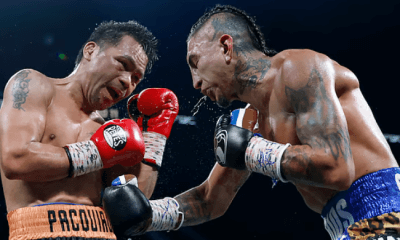
 Featured Articles2 weeks ago
Featured Articles2 weeks agoManny Pacquiao and Mario Barrios Fight to a Draw; Fundora stops Tim Tszyu
-

 Featured Articles3 weeks ago
Featured Articles3 weeks agoPhiladelphia Welterweight Gil Turner, a Phenom, Now Rests in an Unmarked Grave
-
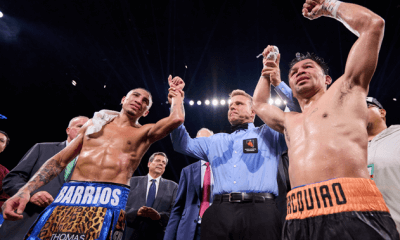
 Featured Articles2 weeks ago
Featured Articles2 weeks agoArne’s Almanac: Pacquiao-Barrios Redux
-

 Featured Articles4 weeks ago
Featured Articles4 weeks agoCatterall vs Eubank Ends Prematurely; Catterall Wins a Technical Decision


